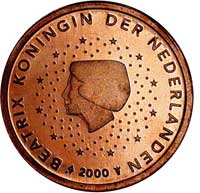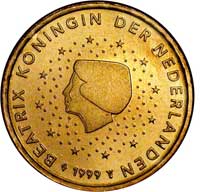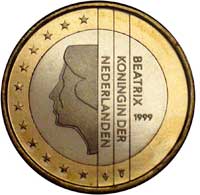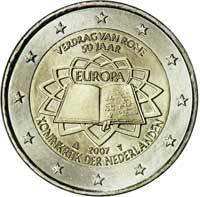| ||||||||||||||||||||||||||||||
General data
Ses successeurs vont compléter son œuvre, jusqu’à Charles le Téméraire, mort en 1477. L’état bourguignon est largement dépecé après sa défaite, mais la Flandre demeure à sa fille Marie, qui épouse Maximilien de Habsbourg. A la mort de Marie, les « pays de par-deça » deviennent les « pays d’en bas » ou Pays-Bas. Charles Quint renforce son emprise par opposition à la France. Mais la Réforme se diffuse très vite, dès le règne de Charles Quint. Philippe II, qui lui succède en Espagne, mène une intense répression. Le nord des provinces a été beaucoup plus touché par la Réforme, et de longues guerres vont se dérouler durant 80 ans. Au départ, il n’est pas question de partition. Guillaume d’Orange « le Taciturne » mène la révolte, et obtient le soutien de l’Angleterre élisabéthaine. A sa mort en 1584, et le désastre de l’Invincible Armada en 1588, les pays du nord deviennent indépendants : les Provinces-Unies, une république. Le gouverneur (stadhouder) de l’état est issu de la famille d’Orange-Nassau. Alliés à la France durant la guerre de Trente Ans, les Provinces Unies voient leur indépendance reconnue par l’Espagne en 1648 au Traité de Münster. Louis XIV ayant entrepris la conquête des Pays-Bas espagnols, entre en guerre contre les Provinces-Unies en 1672 ; le pays s’allie alors avec l’Angleterre, dont Guillaume III d’Orange devient roi en 1689. Après les victoires du Maréchal de Saxe, Louis XV abandonne ses conquêtes sans guère de contrepartie, jugeant avoir bien établi sa fille aînée Elisabeth, dans le très modeste duché de Parme et Plaisance. Le peuple français, réalisant avoir versé son sang, non pour la France, mais pour un objectif personnel du roi, se met à haïr celui qui fut pourtant le Bien-Aimé. Le renversement des alliances – au profit de l’Autriche, qui récupère les Pays Bas espagnols en 1748 au Traité d’Aix-la-Chapelle est très mal vécu en France. Après une période de prospérité, la Révolution française entraîne l’invasion, et Guillaume V se réfugie en Angleterre en 1795. Un profond changement social se produit, aussi bien dans les Provinces Unies (futurs Pays-Bas) que dans les Pays-Bas autrichiens (future Belgique). Napoléon impose son frère Louis comme roi. La défaite napoléonienne entraîne au Congrès de Vienne la création d’un grand royaume des Pays-Bas, avec Guillaume (1er) d’Orange-Nassau comme souverain. Comme expliqué dans la page Belgique, le sud catholique ne tardera pas à faire sécession pour fonder un nouveau pays. A la page Luxembourg, on verra aussi que le grand-duché se séparera définitivement des Pays-Bas en 1890.Les Pays-Bas évolueront vers la démocratie au cours du 19ème siècle, et traverseront la première Guerre mondiale sans drame (neutralité). En 1940, le pays est envahi par l’Allemagne en dépit de sa neutralité. La reine Wilhelmine se réfugie à Londres. L’occupation est dure, même si les Hollandais sont perçus par le régime nazi comme « aryens assimilables ». A son retour, la reine est immensément populaire, comme la grande-duchesse Charlotte de Luxembourg, au contraire du roi Léopold III de Belgique, dont la capitulation a été mal vécue. Les Pays-Bas se sont agrandis de façon significative par l’assèchement du Zuidersee, immense projet (1918-1967). Les Pays-Bas étaient aussi une puissance coloniale. La première expédition hollandaise atteint Java en 1596. Les hollandais, avec la compagnie VOC, n’ont aucun autre objectif que commercial. Dès 1619, les bases de Batavia (Djakarta) sont posées. La colonisation débute avec la prise de Malacca sur les Portugais en 1641. Au prix de guerres – et de massacres – le contrôle des îles se construit. Après la période napoléonienne, où les anglais ont pris le contrôle de Java, le roi des Pays-Bas reçoit la souveraineté exclusive des colonies. Il faut attendre les années 1920 pour voir naître le nationalisme indonésien. Après la seconde guerre mondiale, les Pays-Bas réprimeront durement leur colonie. L’ONU va peser de tout son poids pour exiger l’indépendance, enfin reconnue en Décembre 1949. La fiction d’une « Union Néerlandaise » durera moins d’un an. Il faut y ajouter les Antilles néerlandaises : Curaçao, Bonaire, Saint Eustache, Saba et Saint Martin depuis les années 1630/40, Aruba en 1688. L’esclavage est aboli en 1863. Ces îles (5 plus la moitié de saint Martin – l’autre partie étant française) ont un statut d’indépendance sous tutelle néerlandaise (1954, et en 1986 un statut spécial pour Aruba). Le Surinam (Guyane hollandaise) est restitué en 1816 par les Anglais aux Pays-Bas. Autonome en 1954, le Surinam est devenu indépendant en 1975. Après Wilhelmine (1890-1948), la reine Juliana (1948-80, décédée en 2004) abdique en faveur de sa fille Béatrix en 1980, actuelle reine des Pays-Bas. Le prince héritier est Guillaume (Willem) Alexander. Le prince héritier a trois filles, ce qui devrait prolonger la dynastie féminine après son propre règne ! Les Pays-Bas sont membres fondateurs du BENELUX, de la CEE.
Le néerlandais est une langue indo-européenne de l’espace germanique, très proche du haut-allemand. Netherlands and the Euro No problem for the Netherlands to qualify and introduce the Euro! It is the minting workshop of Utrecht which realizes the national stricking and which took care of those of Luxembourg until 2004. Supported by a numerous customer base, it carries out a very great number of sets. Very old minting workshop which dates back almost without interruption to the 10th century, where were struck the coins of the Bishop of Utrecht, it also struck the gold and silver Francs of the Napoleonean period. The actual mark of the workshop is a caduceus
The Dutch coins look like the Luxembourg coins. It is not astonishing; they are on the same model, the only notable differences being the inversion of the side views with the Queen Beatrix, and the size of the bust on the yellow coins, that of the Queen being much smaller. No €2 commemorative coin was struck before the one of the Treaty of Rome, but on the other hand there is an abundant production of non-circulating coins.
The €2 commemorative coins The Netherlands seem to take part only in the common issues, to date only the €2 commemorative coin of the Treaty of Rome and the one relating to the 10th anniversary of the Euro were struck.
The country letter of the Dutch banknotes is the P. Contact E-mail: pays@amisdeleuro.org Links - the website of the Koninklijke Nederlandse Munt (KNM) : http://www.knm.nl/ | ||||||||||||||||||||||||||||||
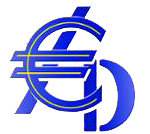 AD€ - Les Amis de l'Euro
AD€ - Les Amis de l'Euro


